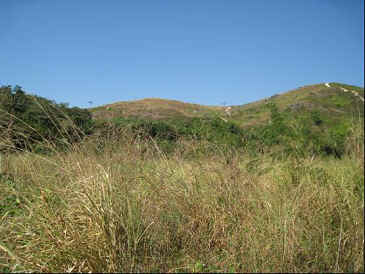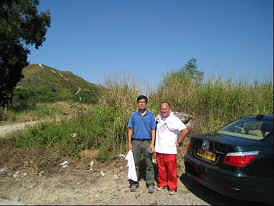
Exclusively brought to you by Kerby Kuek
Visit to Yang Jun Song work 1 and 2 and other famous Tombstones-part 2
Master
Yang Jun Song (楊筠松)
Yang
Jun Song (8th day of the third lunar month 834 years till 12th day of third
lunar month 906 years), a well known Feng Shui Master also know as ‘Yang Save
the Poor”. He left King palace to fulfill his dream to improve the quality of
life for grassroots people especially farmers and needy people by applying the
Feng Shui techniques (Ham Yu). He was born in the province of Shandong.
At
the age of 17th, he passed the highest imperial examination and worked for the
King in palace since then. At the end of Tang’s era, at the age of 45,he got
frustrated and tired by the level of corruptions in the government with higher
taxes and the poor living condition for the needy, at the same token, the Tang
Dynasty was in chaotic stage and he decided to leave the palace and he snatched
away many works on topography, geography, water method, and many others precious
ancient works (Ham Yu) including Guo Pu’s imperial works from King’s library
collections and back away from Zhang An. He lived his life by researching and
applying the Feng Shui techniques thereafter. Together with him was his first
disciple Zhang Men De. He travelled
far and wide from east to west and from north the south, he even came to Hong
Kong and Grand Master Lau Rui Shan (founder of Xuan Kong Zhang Pai) discovered
two of his works (on graveyards) in 2004 in Northern part of Hong Kong (please
refer to pictures below). He was deeply rooted in Jiangxi province and thus many
believed that the Jiangxi sect of Feng Shui is closely linked to him. He placed
great emphasis on the landform or topographical part in applying his Feng Shui
theory. He was poisoned at the age of 72.
His
famous disciples, Zhang Wen De (曾文迪),
Liu JiangDong (劉江東),
Liao Yu (廖禹),
Lai Pu Yi (賴布衣),
Liu Qian (劉謙).
His
famous works include “Trembling
Dragon Scripture” (撼龍經),
‘Suspicious Dragon Scripture’ (疑龍經),
‘Du Tian Treasure Scripture’ (都天寶照經),
‘Green Capsule’ (青囊奧語),
‘The 12 Commandments of Burying Techniques’ (葬法倒杖十二法),
‘Heavenly Jade Scripture’, (天玉經),
‘Master Yang’s Golden Content Scripture’ (楊公金函經),
‘The Diamond Shaped Burial Map’ (金剛鑽本形葬圖抉),
‘The Fu Li Cone’ (立錐賦),
‘The Black Bag Scripture (黑囊經)
and so on.
Exclusively
only to the imperial ruling, he faced a lot of obstacles and challenges to
openly applying his Feng Shui techniques let alone published on books. It is and
I am strongly believed that most of his works on texts were either camouflage or
descriptively in metaphorically in order to avoid or face confrontation from the
imperial. It was said that after he left the palace he brought along quite a
numbers of ancient priceless works in which most author were not known but sad
to say that most of the existing works were merely describing him or merely
referring to him. This is still a controversy among scholars and Feng Shui
practitioners in regards to his true or authentic techniques for Feng Shui.
楊筠松定針(二)
Yang Jun Song Work 2 dated back 1200 years ago:

In the middle of this left side is the work of Yang Jun Song
|
The tomb is secluded and isolated |
The right side view from the tomb |
|
The actual wordings of the tomb with Master Yang name is engraved here |
|
|
Front view |
Tomb Top |
|
Left side view from the tomb |
Side view of tomb |
|
Different angle of front view |
A historical visit to such site with Grand Master Lau |
|
The Path to Yang Jun Song work |
Master Yang work |

The road less travelled!!
Kerby
Kuek
Chief
Disciple of Xuan Kong Zhang Pai